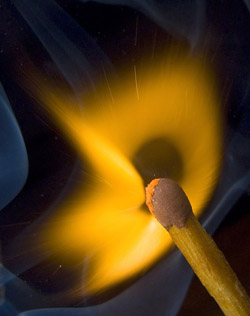

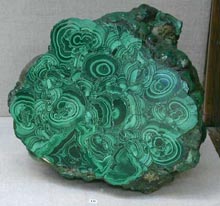
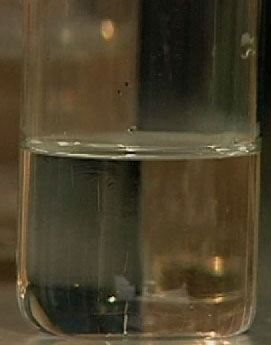
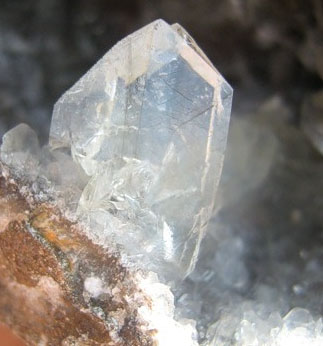
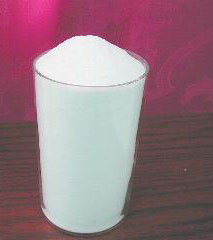
Ammoniac and ammonia
"Prefabricated" of complex substances - ammoniac is a hydrochloric acid (please do not confuse the ammoniac and ammonia – two different complex substances, and belong to completely different classes of substances. Ammoniac - ammonium chloride is a salt of hydrochloric acid, and ammonia is the alkali (base)).
AmmoniacNH4Cl - white substance, belongs to the class of "salt". You can get it if pass ammonia through a solution of hydrochloric acid.
Ammonia- NH4OH is the base - transparent white liquid with a very specific smell of ammonia. It is used as technical 25% ammonia. the
All work with hydrochloric acid and ammonia should be done in a well ventilated room
Chemical properties of hydrochloric acid You can find on the properties of acids. (On the page ammonia You can find a properties of substance ammonia, also known as ammonia water).
Composition of matches
The fiery surface of a matchbox covered with a mixture of red phosphorus and glass powder. The composition of the match heads are oxidizers (PbO2, КСlО3, BaCrO4) and reducing agents (S, Sb2S3). With the friction of the surface mixture on match heads ignited. The first phosphorus matches — with a head of white phosphorus — were founded in 1827. Such matches were ignited with friction on any surface, and it often led to fires. In addition, white phosphorus is very poisonous.
Complex substances of copper - malachite. This mineral is a complex substance, whose composition includes copper. In nature, malachite is born where copper ores are combined with the carbonate rocks: limestone, dolomite, etc. Under the influence of groundwater, in which dissolved oxygen and carbon dioxide, copper from ore goes into solution. Slowly seeping through porous limestone, the solution interacts with it and form a basic copper carbonate — malachite.
For getting an artificial malachite you can use hydrothermal synthesis (from the Greek. "hidro" is "water" and "thermos" — "hot"). This process simulates the formation of minerals in the Earth. It is based on the ability of water to dissolve at high temperature (500 °C) and high pressures (up to 3000 ATM) substances, that at normal conditions is practically insoluble, for example, the basic carbonate of copper.
Copper has an important role in the life processes of organisms — it is part of some enzymes involved in the oxidation reactions of organic substances. Daily requirement of copper for us is about 2-3 mg. Particularly milk and yeast have this element in a large number. However, large quantities of copper in our body are harmful: ingestion of 2 g of copper sulfate can lead to death.
Soda
Soda. When we talk about soda, we almost always think about baking soda (o food soda), that is used in the kitchen. We can add it to the dough, use to wash dishes. The chemical formula of baking soda NaHCO3 is sodium bicarbonate. To get this soda, you can mix a solution of carbonic acid H2CO3 with sodium hydroxide. It should be noted that the reaction was not goes full, i.e. from two atoms of hydrogen in the acid should be substituted only one atom. Compare the two reactions according to the number of reagents:
NaOH+H2CO3→ NaHCO3+H2O
2NaOH+H2CO3 → Na2CO3+2H2O
You can see that in the second reaction of sodium hydroxide were taken in 2 times more, the reaction is fully completed (i.e. the sodium atoms replace all hydrogen atoms in the coal acid).
NaHCO3 is baking soda (in the first reaction). The substance obtained in the second reaction - Na2CO3 - as at first the substance is also called soda, is a fairly caustic substance with distinct alkaline properties (you can check it with the indicators!). To work with a solution of soda ash needs with rubber gloves! In appearance of both soda are no different. Washing soda can be purchased in household shop, and food soda - in grocery.
Gypsum
Gypsum is a white crystalline substance with chemical formula CaSO4*2H2O. From gypsum make sculptural copies, wall decoration, used in medicine. The gypsum has one original feature: when gypsum CaSO4*2H2O is heated to a temperature of 160 to 170 oC, it cleaved 3/4 crystallization water, the result is a alabaster 2 CaSO4*H2O, i.e.
2(CaSO4*2H2O)→ 2 CaSO4*H2O + 3 H2O
When alabaster is kneaded with water and fill form with the resulting "dough", it greedily begins to attach the missing water molecule and turns back into a crystalline gypsum. This slightly increases the volume of material and so it fills all the cavity and reproduces the finest details. So the alabaster ussed to get plaster casts and masks.
Mirabilite (Glauber's salt Na2SO4*10H2O) - the salt, called for the German chemist, who first isolated it and studied. The appearance of the salt (or Glauber's salt) is reminiscent of ice crystals - long and perfectly transparent, and melted like ice!
To taste Glauber's salt - the same as ordinary salt NaCl. Thrown on hot coals the salt does not crack with the noise (unlike food salt) and is not flammable like nitrate. The Glauber's salt are not dangerous to us. It can be used as inside and outside (it often used in medicine). Glauber's salt can heal fresh wounds! Glauber's salt is a great substance for bowel! the
Largest part of the salt is located on the Caspian sea (the Gulf of Kara-Bogaz-Gol). The bottom is covered with this salt, that is formed there from sea water through evaporation.
And that's some list of incompatible compounds (it the substances mixed then goes chemical reaction):
Sodium azide (NaN3) - lead (Pb), copper (Cu).
Nitric acid (HNO3) - acetic acid (CH3COOH), hydrocyanic acid (HCN), aniline, carbon (С), hydrogen sulfide (H2S).
Ammonium nitrate (NH4NO3 or ammonium nitrate) - acids, metal powders, nitrates,sulfur, combustible and flammable substances.
Ammonia (NH3 - in an anhydrous condition), mercury, halogens (fluorine, chlorine, bromine, iodine, astatine).
Acetone - a mixture of concentrated sulfuric and nitric acids.
Bromine - ammonia, acetylene, butane, hydrogen, powdered metals.
Iodine - acetylene, ammonia.
Oxygen - oils, grease, hydrogen, flammable substances.
Copper - acetylene, hydrogen peroxide.
Peroxide - copper, chromium, iron, flammable liquids and substances.
Potassium Permanganate - glycerin, ethylene glycol, sulphuric acid.
hydrogen sulfide - nitric acid, oxidizing gases.
Coal - with all oxidizing agents.
Oxalic acid - with silver and mercury.